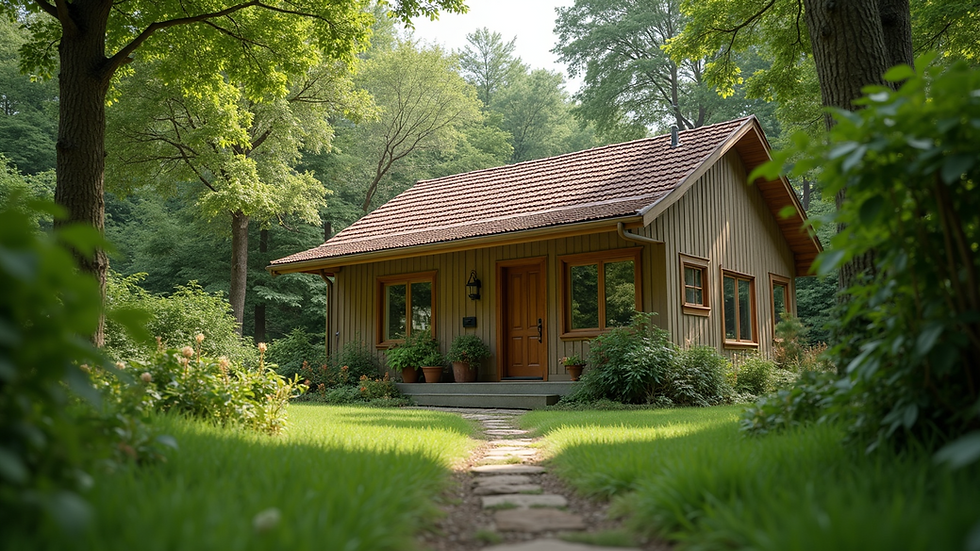Bungalows vs Two-Storey Homes: Evaluating Retirement Living Through Lifestyle and Maintenance Perspectives
- Marcus Umana
- Jul 21
- 4 min read
As retirement approaches, many individuals and couples ponder their ideal living situation. The decision between a bungalow and a two-storey home is crucial, as it impacts daily comfort, convenience, and overall quality of life. This post dives into the pros and cons of each option, focusing on lifestyle and maintenance aspects that are vital for retirees.
Understanding Bungalows
Bungalows are usually single-storey homes known for their wide porches and open floor plans. They offer easy accessibility, making them a favored choice among retirees.
Pros of Bungalows
Accessibility: Bungalows eliminate stairs, which can be a challenge as one ages. According to a survey by the National Center for Injury Prevention and Control, falls are the leading cause of injury among older adults, accounting for 36% of hospitalizations. By choosing a bungalow, retirees can significantly reduce this risk.
Maintenance Simplicity: Fewer levels mean bungalows often require less upkeep than two-storey homes. This can be appealing for retirees who wish to spend less time worrying about home maintenance. For instance, the average annual maintenance cost for a two-storey home can reach around $2,000, while bungalows often average closer to $1,200.
Easier Outdoor Access: Bungalows typically have direct access to gardens or patios, enhancing the enjoyment of nature. Studies show that spending time outdoors can boost mental health, with a 2018 study indicating a 35% reduction in anxiety levels when retirees engage in outdoor activities.
Cons of Bungalows
Space Limitations: Bungalows might offer less living space compared to two-storey homes, resulting in fewer rooms for guests, hobbies, or storage. If a retiree desires dedicated areas for crafts or home offices, a bungalow's limited square footage can be restrictive.
Resale Value: Depending on the local market, bungalows may have lower resale values than two-storey homes. For example, in urban markets, bungalows can sell for 15%-20% less than comparable two-storey homes, potentially impacting retirement financial plans.
Energy Efficiency: The sprawling layout of many bungalows may lead to higher energy costs due to increased heating and cooling needs. Data shows that energy-efficient two-storey homes can reduce utility bills by as much as 30% compared to some bungalows.
Exploring Two-Storey Homes
Two-storey homes feature multiple levels and offer various architectural styles and layouts. While popular with families, they also appeal to retirees seeking unique features.
Pros of Two-Storey Homes
Increased Space: Two-storey homes typically provide more square footage, beneficial for retirees wanting to host guests or enjoy additional living areas. For instance, a common two-storey home can offer up to 2,500 square feet, compared to 1,800 square feet in an average bungalow.
Flexible Design: The layout options in two-storey homes allow for more versatile spaces. Retirees can create specialty areas designed for crafts, reading, or entertaining, maximizing functionality for their lifestyles.
Better Views: Living in a two-storey home can offer elevated views, adding to the home's aesthetic appeal. Many retirees find joy in sipping coffee on a higher balcony while enjoying panoramic vistas that a bungalow may not provide.
Cons of Two-Storey Homes
Stairs and Mobility Issues: Navigating stairs can present an obstacle for retirees with mobility concerns, making future adaptations necessary. A study by the National Institute on Aging found that about 18% of seniors face difficulty using stairs, which can diminish the enjoyment of their homes.
Maintenance Challenges: Maintaining two levels can be more labor-intensive. Services for cleaning gutters, windows, and roofs can lead to additional yearly expenses sometimes exceeding $1,500. This is often higher than the costs associated with maintaining a bungalow.
Outdoor Access: Outdoor areas in two-storey homes may require navigating stairs, thus lessening easy access to gardens or patios. For retirees who enjoy gardening or outdoor leisure, this modicum of inconvenience could be a drawback.
Lifestyle Considerations
Ultimately, the decision between a bungalow and a two-storey home depends on the envisioned lifestyle in retirement.
Active Lifestyle
For retirees prioritizing an active lifestyle, bungalows can be a better match due to their easy outdoor access and stair-free designs. Such environments can facilitate frequent engagement with nature, promoting overall well-being.
Social Interaction
If a retiree values hosting family and friends, the larger living spaces typically available in a two-storey home may be preferable. With extra rooms and separate areas for entertaining, two-storey homes can enhance social gatherings.
Maintenance Perspectives
Maintenance is a critical factor that impacts long-term satisfaction with a home.
Time Investment
Bungalows usually require less time and effort to maintain. This simplicity allows retirees to devote more time to hobbies, travels, or spending time with loved ones.
Financial Implications
The financial aspects of upkeep vary significantly. While two-storey homes may have higher maintenance costs due to their size, retirees need to assess whether the additional space and flexibility justify the expense.
Final Thoughts on Your Retirement Living Decision
Deciding between bungalows and two-storey homes for retirement requires careful consideration of lifestyle preferences and maintenance demands. Bungalows offer excellent accessibility and lower maintenance needs, while two-storey homes provide more space and flexibility.
Ultimately, this choice should align with personal priorities and long-term plans. Thoughtfully evaluating these factors will ensure that your new home enhances your quality of life during this cherished phase of retirement.

.png)



Comments